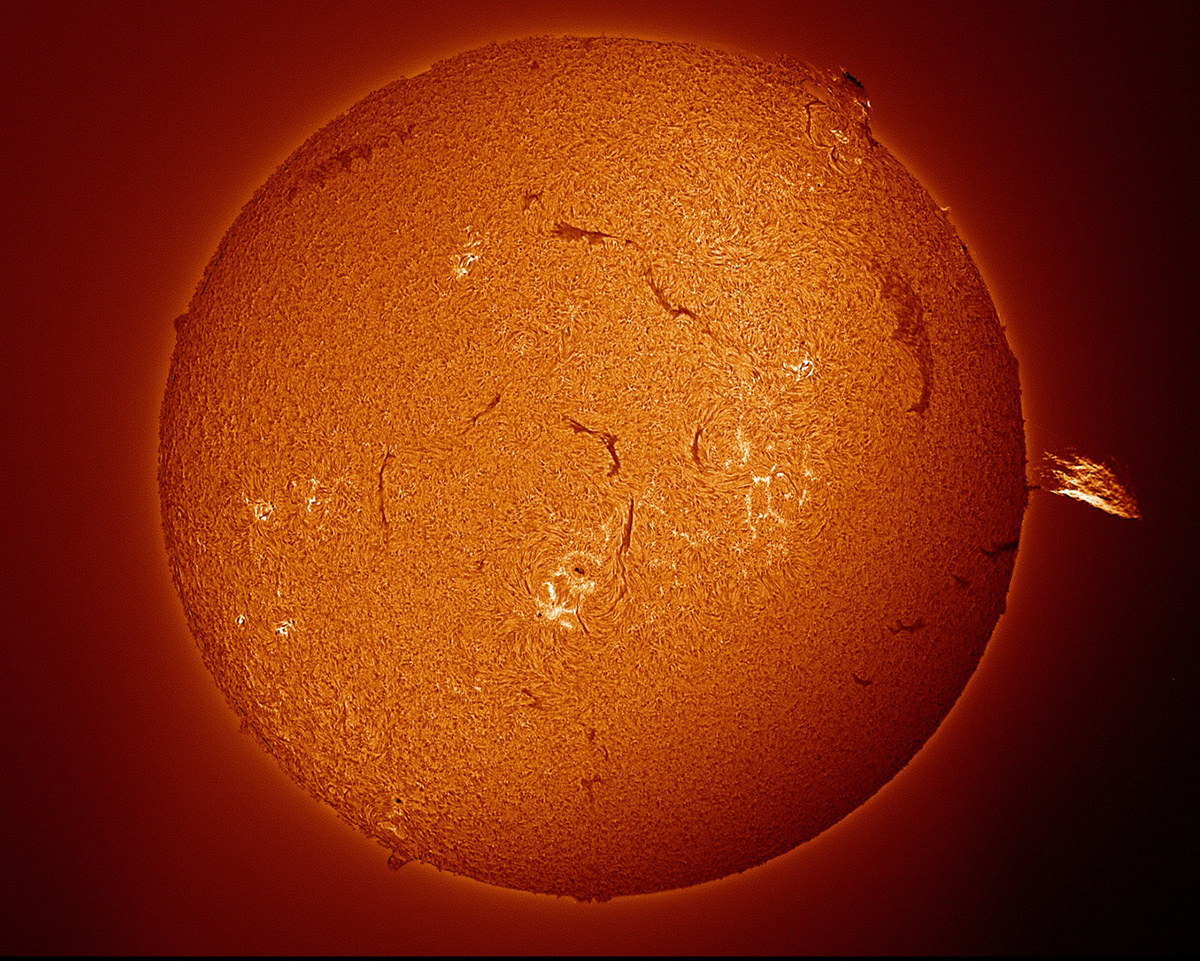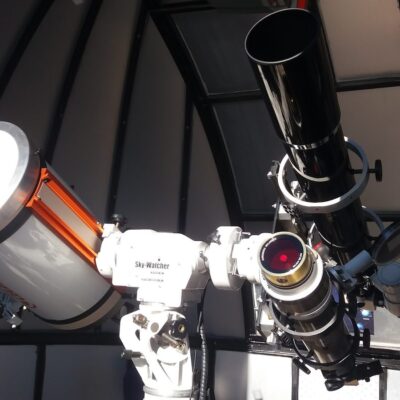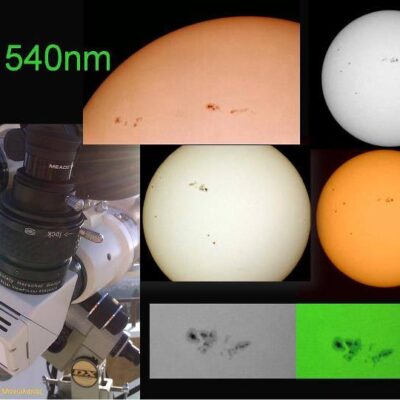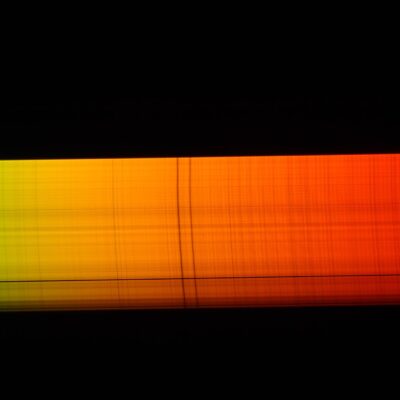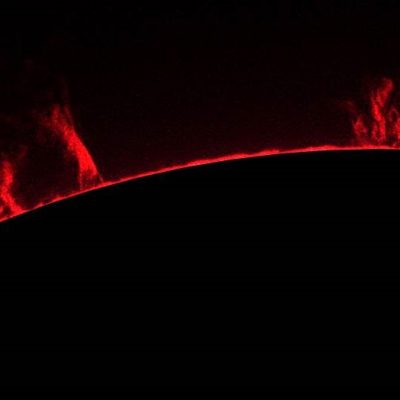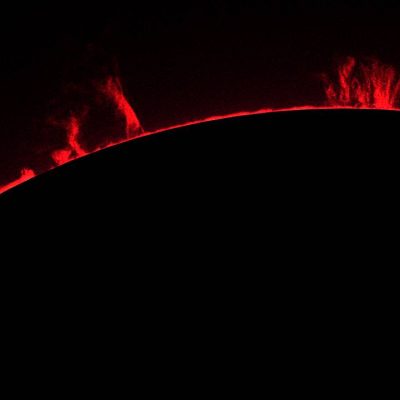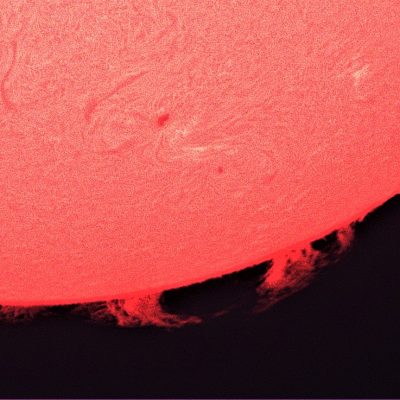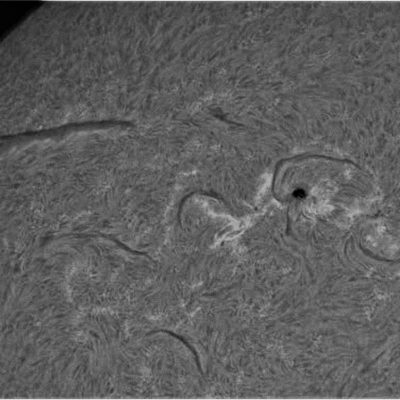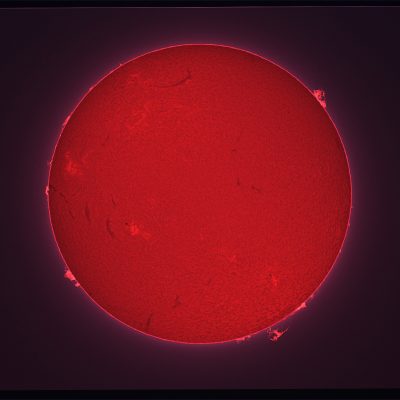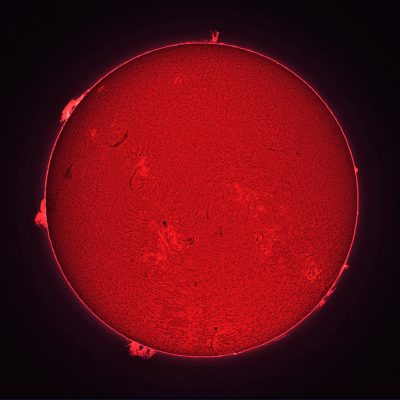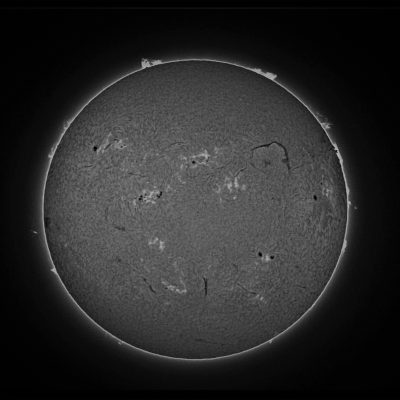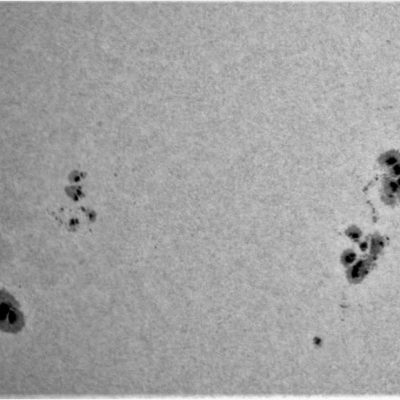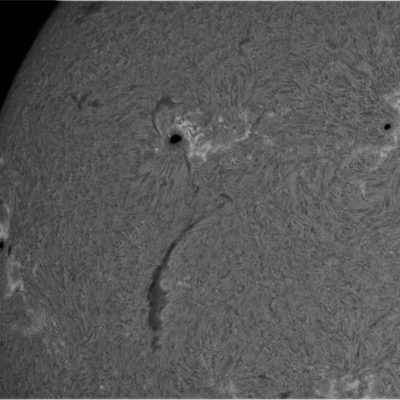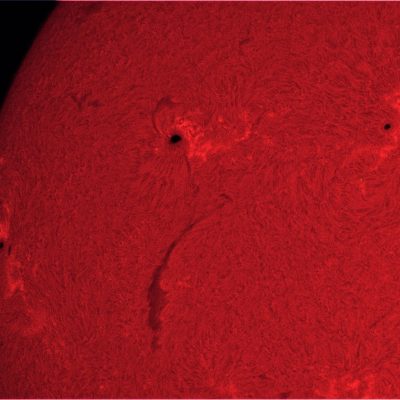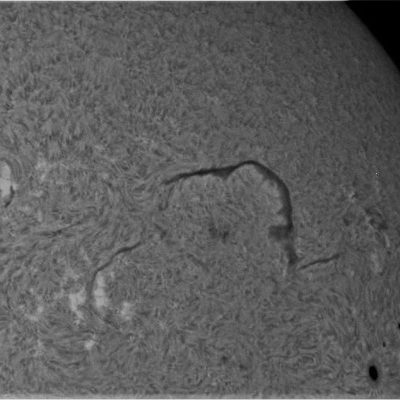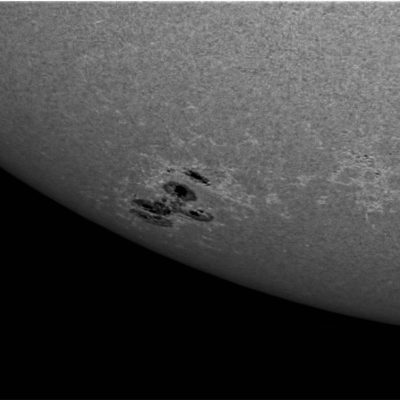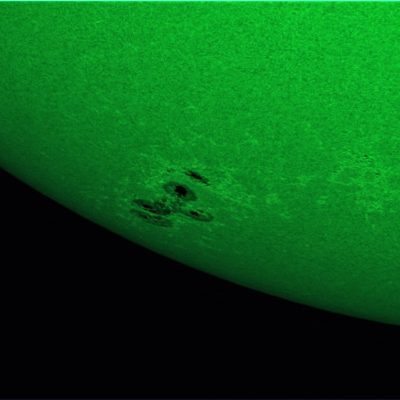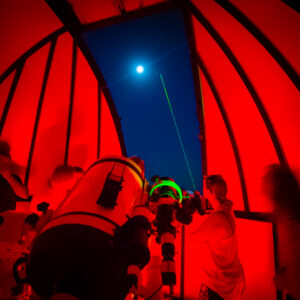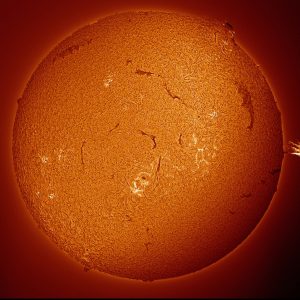Description
Solar Observation
Solar protection.
During the solar observation, the eyepieces use special filters for cutting off the (IR / UV) ultraviolet and infrared rays as well as certified solar filters.
NEVER LOOK AT THE SUN WITH NAKED EYES. RISK OF BLINDNESS.
The duration of the solar observation is about 60 minutes and you will experience it live with the owner of Astronomy Cafe, Stergos Manolakas. The observation begins with the introduction and explanation of the solar telescopes and filters as well as a summary of solar phenomena. We analyze the light with a high resolution spectrometer in the colors of the spectrum and then we start observing the sun. After the observation we start photographing the sun together with a special camera.
Then process the images of the photosphere, the chromosphere and all the solar phenomena on the surface of the sun. With this process, many details become visible and perceptible that during simple observation with the telescope are very difficult for the eye to perceive. When finished, we send you by e-mail the processed photos as a souvenir of the solar observation. We would like to inform you that the star of the day is alive and the phenomena can vary in terms of their activity.
Observation of photosphere at 540nm ( green).
The Skywatcher Equinox-120 Pro 120mm 900mm ED-APO Refractor Telescope with 2″ prism Hershel filter Continuum at 540nm (green). With the help of long focal length of the instrument is extremely easy to observe formations of spot groups, shadows, the penumbra and the torches. Furthermore there is the option to view the solar image on projection screen (monitor) with a diameter of 50 centimeters . Solar telescopes have focused type crayford with steel runners and decimal division for precision focus.
Chromosphere observation. (red)
Filter hydrogen (Ha) in 656,23nm with Front Etalon D = 60mm and BF10, With refractor ED80 Pro-Series diameter and 80mm focal length F600mm with focal ratio f/7.5, in combination with hydrogen filter Ha Front Etalon D = 60mm and BF10 in 656,28nm, we are able to see the chromospheres (the solar atmosphere).
Rapid changes in the chromosphere, (within a period of even a few minutes), give us the opportunity to see extensive formations explosive projections (jets of glowing hydrogen with dimensions exceeding sometimes and 500,000 km !!!) and solar flares that are extremely violent phenomenon that occurs in the solar chromosphere.
With the help of the regulator (tuner)hydrogen filter we can see the deeper layers of the atmosphere of the sun. The impressive chromospheric phenomena are rapidly evolving and are perceived observing within minutes. Sun spots, torches, projections and flares can be observed almost
daily (weather permitting) through the optics but also through CCD camera and monitor. It is also possible from the visitor to take pictures.
Observing the sunlight with the spectrograph – spectroscope
Although it is relatively rare for someone to observe the sunlight through a spectrograph, we however in the observatory of Astronomy Cafe of Rhodes, allow guests to observe the analysis of sunlight with a high-resolution spectrograph (reflective barrier 1200 lines / mm 12,32Å / mm).
The observer will notice the solar spectrum dotted by hundreds Fraunhofer absorption lines with a backdrop of breathtaking colors of the iris (the rainbow!!). Besides ophthalmoscopic observation, we can add a camera for photographing the solar spectrum.

